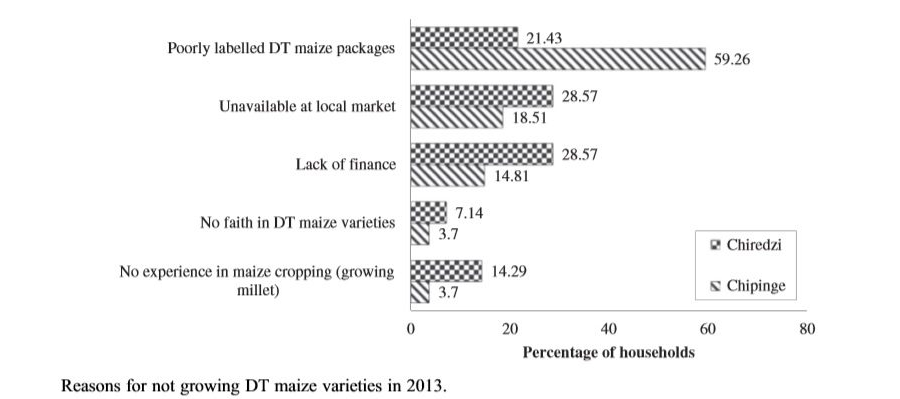Drought is a huge limiting factor in maize production, mainly in the rain-fed agriculture of sub-Saharan Africa. In response to this threat, drought-tolerant (DT) maize varieties have been developed with an aim to ensure maize production under mild drought conditions.
We conducted a study to assess the impact of smallholder farmers’ adoption of DT maize varieties on total maize production. Data for the study came from a survey of 200 randomly sampled households in two districts of Chiredzi and Chipinge in southeastern Zimbabwe.
The study found that 93% of the households were growing improved maize varieties and that 30% of the sampled households were growing DT maize varieties. Total maize yield was 436.5 kg/ha for a household that did not grow DT maize varieties and 680.5 kg/ha for households that grew DT maize varieties.
We control for the endogeneity of the DT adoption variable, by using the control function approach to estimate total maize production in a Cobb–Douglas model. The results show that households that grew DT maize varieties had 617 kg/ha more maize than households that did not grow the DT maize varieties. Given that almost all farmers buy their seeds in the market, a change in varieties to DT maize seeds gives an extra income of US$240/ha or more than nine months of food at no additional cost.
This has huge implications in curbing food insecurity and simultaneously saving huge amounts of resources at the household and national levels, which are used to buy extra food during the lean season.

